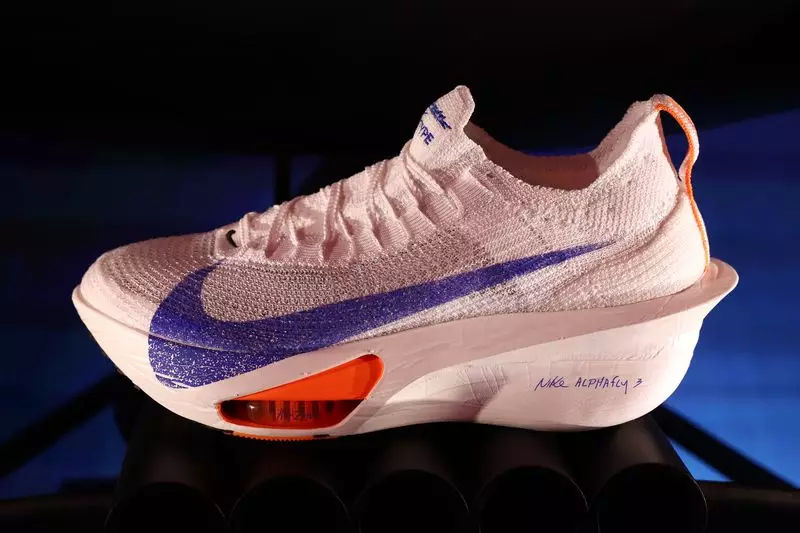Nike Inc., the renowned sportswear giant, delivered a quarterly performance that was a double-edged sword. On one hand, the company exceeded analysts’ earnings per share expectations, posting 78 cents against the forecast of 63 cents; on the other hand, the news of anticipated revenue decreases revealed the stark challenges that lie ahead. Following the earnings announcement, the initial surge of 11% in share prices quickly subsided as the company projected a worrying low double-digit decline in revenue for the upcoming quarter. This forecast was notably more pessimistic than analysts’ consensus, which was a predicted decline of 7.65% to approximately $11.48 billion. This scenario illustrates the challenges faced by Nike as it vies for top position in a competitive market characterized by shifting consumer tastes and aggressive competitors.
The voice of leadership has shifted to Elliott Hill, the newly appointed CEO, who took the helm in October. Hill’s inaugural earnings call revealed the company’s introspection about its recent market position. Declaring that Nike had “lost its obsession with sport,” Hill has ambitious plans to steer the firm back to its roots. His focus on enhancing market share includes a commitment to elevating product quality and pricing, though he cautioned that these changes won’t be instantaneous. His comments signal an acknowledgment that Nike has veered off course, emphasizing the necessity for a reinvigorated focus on core sporting values and premium offerings.
Nevertheless, in the wake of aggressive marketing by competitors, Hill’s aspirations require immediate, tactical implementations. The overarching narrative from the call indicated a pivotal moment for Nike, one where strategic decisions could either breed renewed success or further exacerbate existing woes. The company’s net revenue for the second quarter witnessed a decline of 7.7% to $12.35 billion, which, albeit less severe than some pessimistic forecasts, still underscores a company in search of recovery.
The Need for a Brand Rebirth
The prevailing sentiment among analysts is one of cautious optimism, with data suggesting that while the numbers are sobering, Nike’s performance was not as bleak as anticipated. Jessica Ramirez, a senior analyst from Jane Hali & Associates, aptly noted the underlying issues with operational performance which, while presenting a façade of stability, hint at a deeper concern over Nike’s market strategy.
Hill’s plan to revitalize partnerships with retail players comes at a crucial time. The mention of “becoming far too promotional” highlights a conscious effort to curb excessive discounting practices that have diluted Nike’s brand equity in the marketplace. Hill is keenly aware that maintaining healthy partnerships with key retailers like Foot Locker is essential for restoring brand integrity and profitability. Implementing a systematic approach to markdowns may help to protect both Nike’s standing and the financial health of its retail partners, illustrating a holistic approach to market revitalization.
In an age where consumer preferences shift rapidly, innovation emerges as a focal point for Nike’s recovery strategy. Recent product launches like the revamped Air Max 95 and reinvigorated Jordans demonstrate the company’s commitment to not just maintaining its traditional brands but also pitching competitive offerings that can stand up against the likes of emerging brands that prioritize comfort and engineering. Notably, Hill highlighted a strategic pivot towards enhancing three major running franchises—Pegasus, Structure, and Vomero—signaling a reinforced focus on performance and quality.
This approach—devoting capital and resources towards signature products while courting new designs that encapsulate consumer desires—may aid in bridging the gap between Nike and its competitors. Additionally, advancing investments in diverse categories such as football and basketball indicates a long-term vision aimed at reclaiming market share across sports disciplines.
Nike stands at a crossroads, facing formidable challenges that could either redefine its market presence or further entrench its status as a struggling titan. While Elliott Hill’s leadership signals a commitment to change, success hinges on the execution of strategic priorities and effective brand management in a landscape ripe with competition. As the company pivots towards genuine innovation and a refreshed focus on its core values, the path ahead may still be fraught with obstacles. However, within these challenges lies the potential for transformation—a critical truth that Nike must embrace as it endeavors to reclaim its former glory.

